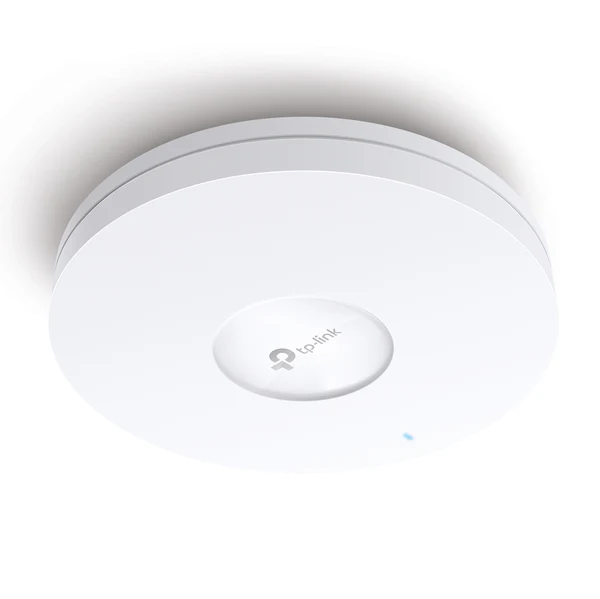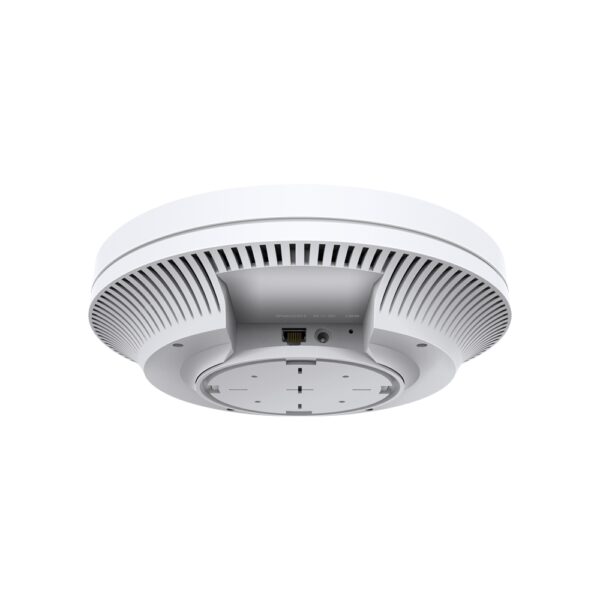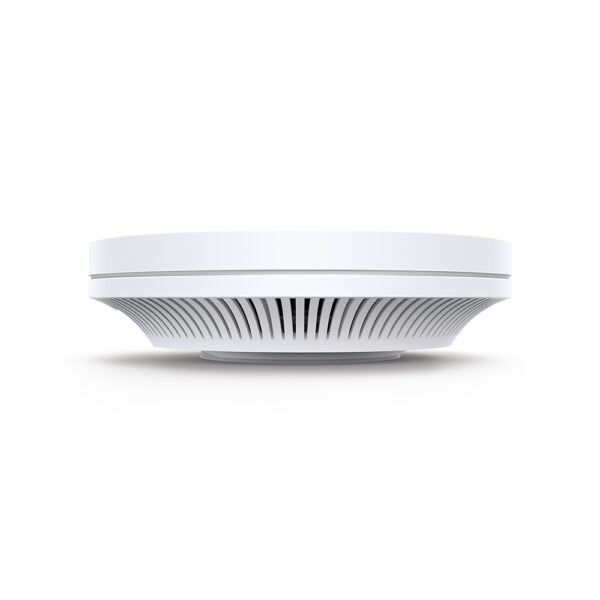In the rapidly evolving world of enterprise-grade wireless networking, TP-Link has emerged as a trailblazer with the introduction of its Omada EAP783 access point (AP). This slimline marvel not only sets a new standard for Wi-Fi 7 performance but also showcases the company’s commitment to future-proofing business connectivity.
The EAP783 boasts an impressive set of specifications that put it at the forefront of the industry. With a claimed data rate of 1,376Mbits/sec on the 2.4GHz radio, 5,760Mbits/sec on 5GHz, and a blazing-fast 11,520Mbits/sec on the 6GHz band, this AP delivers the kind of throughput that can transform the way businesses operate.
The EAP783 achieves this with a claimed 1,376Mbits/sec on the 2.4GHz radio, 5,760Mbits/sec on 5GHz and a speedy 11,520Mbits/sec on 6GHz, with the latter enabling the ultrawide Wi-Fi 7 320MHz channels,” the article explains.
But the EAP783’s prowess extends beyond raw speed. It is also one of the first APs to support the cutting-edge multi-link operation (MLO) feature, which allows devices to connect to the 2.4GHz, 5GHz, and 6GHz bands simultaneously. This innovative approach can significantly improve throughput and reduce latency, making it an invaluable asset for businesses that demand the highest levels of performance and responsiveness.
“It’s also one of the first APs to support the multi-link operation (MLO) feature, which allows devices to connect to the 2.4GHz, 5GHz and 6GHz bands simultaneously for increased throughput and reduced latency,” the article states.
However, the article notes that the full potential of MLO may not be immediately realized, as “very few end-user devices currently support MLO, and Windows users will have to wait until Windows 11 24H2 is fully released.
Physically, the EAP783 is a compact and sleek unit, measuring 280mm in diameter and just 47mm thick. Despite its slim profile, the AP is equipped with 12 internal antennas, ensuring robust wireless coverage. The device also boasts impressive connectivity options, with two 10GbE ports – one of which requires the use of a PoE++ power source, while the other can be aggregated for even higher network speeds.
“Despite the AP’s 12 internal aerials, TP-Link has kept the size down to a manageable 280mm diameter and a thickness of 47mm. It’s heavy, though, tipping the scales at 1.4kg – around 15g more than Zyxel’s WBE660S,” the article notes.
In terms of performance, the EAP783 delivers remarkable results. During real-world Wi-Fi 7 tests, the AP was connected to a Zyxel 10GbE PoE++ switch, and a Lenovo desktop client running the Windows 11 Pro 24H2 Insider Preview, equipped with a TP-Link Archer TBE550S Wi-Fi 7 PCI-E adapter. The results were nothing short of impressive, with the client reporting a Wi-Fi 7 connection speed of 5,764Mbits/sec and achieving large file transfer speeds of up to 323MB/sec at close range and 280MB/sec when the AP was placed ten meters away in an adjoining room.
With Windows reporting a Wi-Fi 7 connection speed of 5,764Mbits/sec, we saw large file copies between the client and a Windows server on our 10GbE LAN averaging close-range speeds of 323MB/sec, dropping to an equally impressive 280MB/sec with the AP placed ten meters away in an adjoining room,” the article states.
The EAP783’s versatility is further enhanced by TP-Link’s Omada cloud management platform. Businesses can choose to deploy the hardware or software controller on-site or opt for the cloud-hosted service, which offers a yearly fee of £165 for up to 250 devices. The article highlights the value of TP-Link’s OC300 dual-port controller appliance, which provides lifetime cloud management of up to 500 Omada APs, switches, and routers for a one-time cost of £130.
“TP-Link offers plenty of cloud management choices. You can deploy its hardware or free software controller on-site or use its cloud-hosted controller, which has a yearly fee of £165 for 250 devices,” the article explains. “We use TP-Link’s OC300 dual-port controller appliance in the lab as its £130 price enables lifetime cloud management of up to 500 Omada APs, switches and routers.”
The Omada platform’s user-friendly interface and comprehensive features, such as the ability to create multiple SSIDs, apply encryption schemes, and set client and SSID rate limits, make it a compelling choice for businesses seeking seamless and centralized wireless management.
With the Omada EAP783, TP-Link has staked its claim as a leader in the Wi-Fi 7 revolution. This access point’s impressive performance, innovative features, and robust cloud management capabilities make it an attractive option for businesses looking to future-proof their wireless infrastructure and stay ahead of the curve in the ever-evolving world of enterprise connectivity.















Add Comment